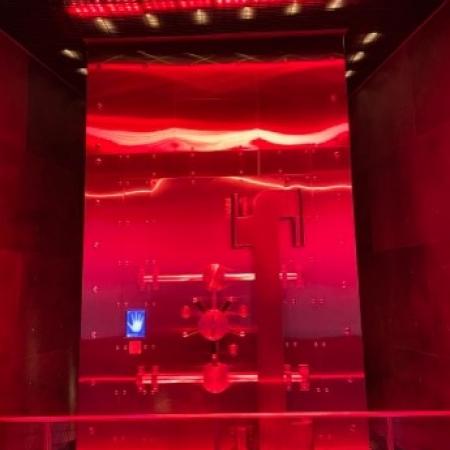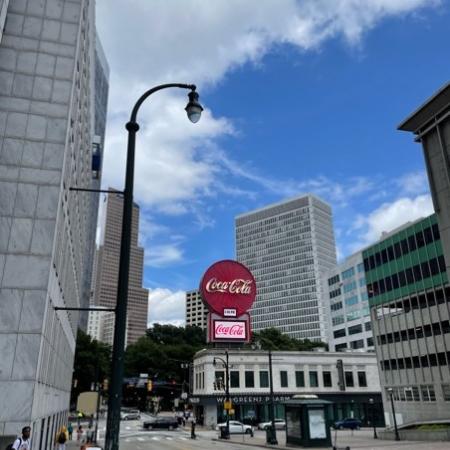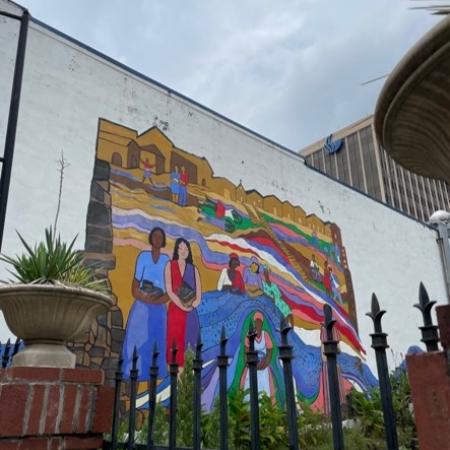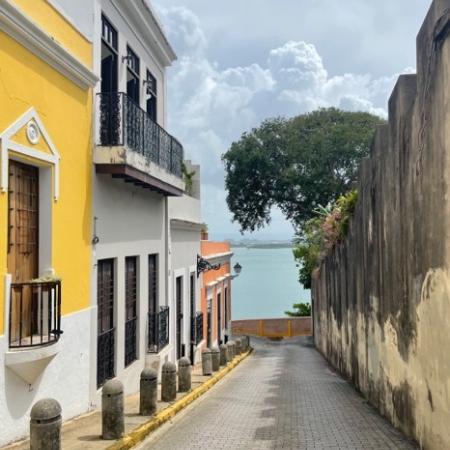Report: Joe explored local history in Atlanta and San Juan

I am standing inside a circular room. All around me is darkness. Darkness, bar the aggressive glow of red fluorescent lighting. It shimmers off fourteen feet of reinforced stainless steel, tinging the dimness of my surroundings with a bright, bloodshot hue. It is a vault, and as I am soon told over loudspeaker, it holds the ‘secret formula’. I can’t help but let out a quiet chuckle. Peering around I see no similarly humoured grins, but instead a growing rabble of tourists, eyes widening, cameras poised, toes tipped. Even in my cynicism, I can’t help wondering: well, is it really? I get hold of myself. Why should that matter?

Beginning my visit to Atlanta with a trip to the ‘World of Coca-Cola’ was of course, just a bit of fun. But that particular moment, that peculiar dilemma I faced when locked inside the heart of a commodified tourist centre stood out to me. It encapsulated the historical question I was trying to answer. How can water, sugar, and caffeine be transformed into a commodity, a brand, and a symbol that blur the lines between the local, national, and global? Why do moments like that feel religious, as loyal pilgrims flock from across the world to worship a sacred hidden truth kept locked away?
These are the questions that I am grappling with for my current undergraduate thesis, to be completed in March of next year. They were also the questions that motivated me to visit Atlanta and Puerto Rico in July of this year. This trip would not have been possible without the generosity of Lord Grimstone coupled with the encouragement from the Tutors’ Committee at Merton and from my thesis supervisor, Professor Uta Balbier. I hold all in great debt for approving my proposal, and only hope that by sharing my experiences that I can begin to pay this back.
I complemented my time exploring Atlanta with visits to Emory University and the Atlanta History Center. Emory was itself especially interesting, as an architectural and historical space, given its founding as a Methodist college and its continued patronage by Coca-Cola. The conversations I had with the academics and personnel involved in collecting, researching, and displaying the ephemeral history of Coca-Cola were perhaps the most rewarding moments during my visits over those three days. A smiling and welcoming researcher of Coke’s history under President Woodruff encouraged me to consider new threads in the company’s history, particularly the role of technology and the environment in its expansion.
As a rapidly expanding cultural hub of the Southern US, I was especially keen to explore Atlanta’s gastronomic scene. I spent one afternoon at farmers’ markets in Decatur, meeting local peach growers, pecan harvesters, and tomato cultivators. I tried fried chicken and waffles but resisted the option that came with a peach cobbler on top.

I was also drawn to Atlanta due to its position as the urban hub of a former prominent cotton-growing state. Interested in the intersections of Black and evangelical experiences in the American South, the city presented me a with a vastly unique and unfamiliar experience. At first deeply concerned by the demographic inequalities I was opened to a new, refreshing view with a day tour of the Martin Luther King district. ‘Sweet Auburn’, as residents knew it a century ago, came to life as the beating heart of black business and evangelicalism that it was once in the early 20th century. My guides revealed a story that spoke to the importance of pride in place. In this sense, the Atlantean parochialism I had found so peculiar at the start of my visit had been flipped on its head. A city still struggling with persistent inequalities cut across racial lines, I was warmed to an African American urban experience and space that, while speckled with misfortune, was in no way lost to time. It revealed itself in new colours: in the open doors of the King church, the area’s growing restaurant scene, and the kaleidoscope of painted facades that decorate the homes of local black entrepreneurs, past and present. They stand strong as testaments to history that should not, and evidently refuses to be whitewashed and forgotten.

I then travelled to Puerto Rico. I spent my first full day travelling to El Yunque, Puerto Rico’s vast national rainforest. We stopped off by Luquillo beach on the way back, a great opportunity to have a dip and sample the local street-food scene. If you can deep fry it, they’ll do it. And I certainly wasn’t complaining.
My day spent exploring the old town was also an opportunity to dive into the history of San Juan, as an early site of Spanish colonialism that rubbed against the gradual Americanisation of the island. Increasingly succumbing to the benefits and pressures of international tourism (I count myself as a guilty partner here), the capital nonetheless revealed many hidden gems off the beaten path of bars and souvenir shops. I was particularly pleased by the city as an architectural space, reminiscent of Havana with its vibrant buildings painted after the revolution in defiance to the colonial standard white. The architectural maturity of the city was pleasantly complemented by new cultural spaces I encountered. The Galería Nacional and Instituto de Cultura Puertorriqueña were especially unique in this regard, offering a space for local and indigenous art and literature within the walls of an old Dominican monastery. I took the opportunity to buy a short journalistic-poetic book on Santurce, the area I was staying in. Furnishing my bedside table, it’s one piece of nostalgia I can use to return to the streets I had only just began to discover. That is at least when I find the time to read it...
I write with great fondness looking back over the 10 days I spent both in Atlanta and San Juan. Both cities introduced me profoundly unique and exciting experiences. I was taken down new paths for my thesis. I was exposed to two contrasting ways of life, and indeed ways in which Georgian and Puerto Rican society were coming to terms with their colonial and racial pasts and presents. I made new friends; some lasting, from the circles of Atlantean academia to the breakfast table at the hostel; some fleeting, too, at farmers markets, museums, tours, treks, bars, beaches, and art galleries. And one more thing, I suppose. If it truly was Coke’s mission be ‘within an arm’s reach of desire’, then clearly desire must have been following me. Whether in the glaring light of Coca-Cola vault or the distinctive red canopies of San Juan’s bars, in the humid Georgian metropolis or under the beating Caribbean sun, I couldn’t help but let my mind – and my appetite – wander towards the thought of an ice-cold sip of a history that remains as effervescent as ever.